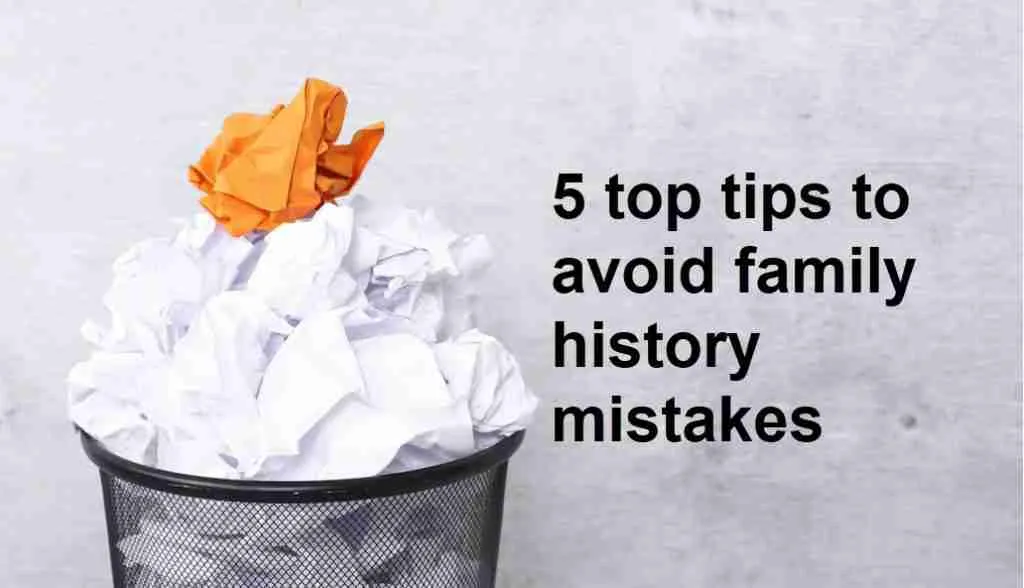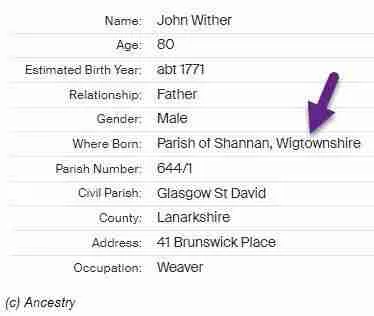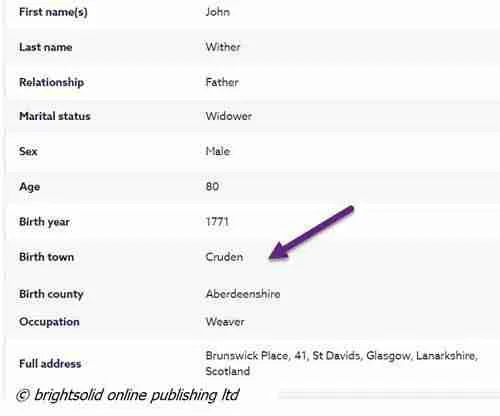How to research your family history using my 5 top tips
In my ongoing series of ‘How to Research your Family History’, here are my 5 top tips to avoid mistakes when you are researching your family tree.
So you have started doing your family history, or maybe you have been researching your ancestors and you are a bit stuck. Tracing your ancestors is like a big puzzle trying to fit pieces together, even when they don’t match.
Get in touch if you are stuck, or use these 5 top tips to save time and avoid mistakes when researching your family history:
1. Do not accept family history legends as facts
There may be a grain of truth in the story but it’s your job as the family historian to separate truth from fiction, identify the fake news! Do your homework. It is lovely to share family stories or legends when you are gathered together and remembering past times. However, these stories have been passed down from generation to generation, and eventually watered down – a bit like Chinese whispers. What started as the truth may end up exaggerated or facts omitted out because of shame or embarrassment.
Also, if your ancestor shared the same name as a famous person does not mean you are related to them just because Great Aunt Molly says so. Be open to making discoveries but be careful when sharing the information with Great Aunt Molly who may be upset that she was not related to that famous person.
2. Don’t believe everything that is transcribed on the internet
People who transcribe old documents are invaluable. We need more transcribers around the world to help share information on the internet. Subscription family history databases such as Ancestry and FindmyPast, to name a few, have transcriptions of millions of documents on their sites. These transcriptions help us put together our family trees with names, dates and places. However, be cautious because there can be mistakes, missing information or typos.
For example, here are two different transcriptions of an 1851 Scottish Census of the same man, John Wither, born about 1771 and living at 41 Brunswick Place:
Both have different places of birth and one of them could be true. However, when I visited ScotlandsPeople centre I looked up the same census and discovered that John Wither was actually born in Stranraer, Wigtownshire. Stranraer looks similar to Shannon. In addition, the gentleman below John Wither in the census was born in Cruden, Aberdeenshire. Thankfully, both online platforms give you the opportunity to correct the mistakes.
Therefore, always verify the source if you can. This will help you avoid making the same mistakes as the transcribers.
3. Do not copy other people’s online family history trees
Please don’t assume that other people’s family trees are correct and reliable. Often when I am doing a search on an online subscription site, I can found the correct person with the correct parents and siblings. However, the owner of the tree has included a birthplace on the other side of the world.
So, don’t believe what you find and do not take people at their word. Take your time, do your homework and find the source, if you can, before adding key events to your tree.
4. Don’t use the same spelling – try different variations of spellings
This can be for first names, surnames and even places. Spelling has changed over the centuries because people used to write phonetically. Particularly in Scotland where surnames could include Mac, Mc or even M’.
To confuse things even more, some Scottish forenames are interchangeable with others. Sometimes the alternative names are obvious, such as Christina or Christian. However, other Scottish first names such as Marion was commonly recorded as Sarah in countries outside Scotland. Other less common interchangeable forenames are
- Donald – Daniel
- Ann – Hannah or Nancy
- Alexander – Sandy
- Iain/Ian – John
- Patrick – Peter
If you are struggling to find an ancestor, write other possible spellings of their names or places where they lived. For example, the village Harrietfield in Perthshire can also be spelled as Harriotfield so think phonetically. The Scottish Ordnance Survey Name Books available on ScotlandsPeople website under Virtual Volumes are great because they have different spellings for place names.

5. Don’t’ Waste time – Keep a Research Log
Sounds boring, doesn’t it? But a research log can save you a lot of time and energy. It is a separate document from the family tree but both should work together. A research log should include all the online places or repositories you have accessed to find your information. It avoids duplicating your search while also allowing you to recall where information came from should you later question it. You may also want to include a transcription of the document if you are not making photocopies.
There are numerous free templates available online. Alternatively you can simply create a document from Excel or Word.
In summary…
Tracing your family history is fun and very satisfying when you make the connections. Just make sure that you have done your research and find the resources to corroborate your family story.
If you’re stuck then get in touch and ask me for help. Or just ask and I’ll add you to the list to receive my useful monthly family history newsletter.
You may also like...
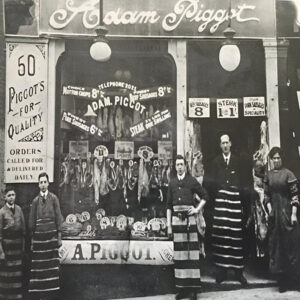
Butcher Family History: My Ancestor Was a Butcher
Learn about your butcher family history and find out what life was like for butchers in Scotland’s towns and villages.
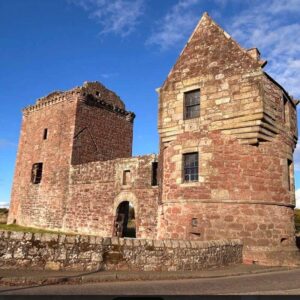
The Balfour Surname – Meaning and History
The Balfour surname is Scottish, found in Orkney, Aberdeen-shire, Angus and Fife. It is a place-name meaning “farm by the pasture.”
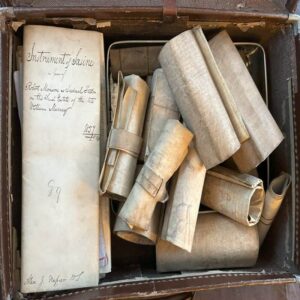
Unlocking Family Tree Secrets
A family tree was brought to life by an old suitcase revealing links to Balvaird Castle, Murrayshall and Scone Palace.
